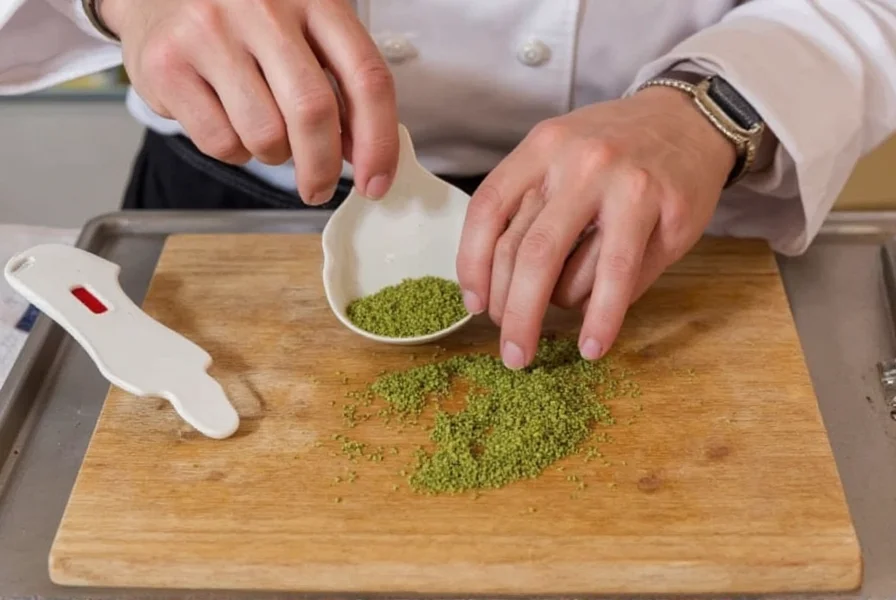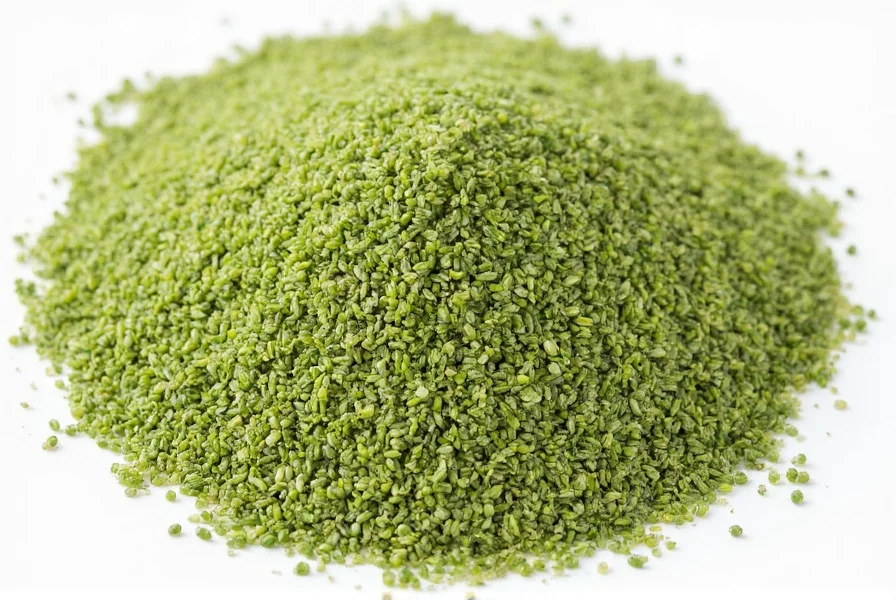Understanding this versatile spice begins with recognizing its unique properties compared to fresh celery or whole celery seeds. Ground celery seed delivers intensified flavor due to increased surface area, allowing quicker flavor release in dishes. This makes it particularly valuable in dry applications where fresh celery would add unwanted moisture.
What Exactly Is Ground Celery Seed?
Celery seed comes from the fruit of the celery plant (Apium graveolens), specifically varieties grown for seed production rather than stalks. After harvesting, these tiny seeds undergo a drying process followed by grinding into a fine powder. The resulting ground celery seed maintains the characteristic celery flavor profile but with greater concentration and different application possibilities.
Unlike celery salt (which combines ground celery seed with salt), pure ground celery seed contains no additives. This distinction matters significantly when following recipes that specify one or the other, as adding additional salt could over-season your dish.
Ground Celery Seed vs Whole Celery Seeds: Key Differences
While both forms originate from the same source, their culinary applications differ substantially. Understanding these differences helps maximize flavor in your cooking.
| Characteristic | Ground Celery Seed | Whole Celery Seeds |
|---|---|---|
| Flavor Release | Immediate, intense flavor infusion | Gradual flavor release during cooking |
| Texture Contribution | Smooth, no visible particles | Noticeable small seeds in final dish |
| Best Applications | Dry rubs, spice blends, baked goods | Brines, pickling, slow-cooked dishes |
| Shelf Life | 6-12 months (flavor degrades faster) | 1-2 years (better flavor retention) |
Optimal Culinary Applications for Ground Celery Seed
Ground celery seed shines in recipes where consistent flavor distribution and dry texture matter. Professional chefs particularly value it for specific applications that would suffer from the moisture content of fresh celery.
Dry Rubs and Seasoning Blends
When creating dry rubs for meats, poultry, or vegetables, ground celery seed integrates seamlessly with other spices. Its fine texture ensures even coating without the speckled appearance of whole seeds. Try incorporating it into your next barbecue rub at a ratio of 1 teaspoon per pound of meat for subtle celery notes that complement smoky flavors.
Baked Goods and Bread Recipes
Artisan bread makers frequently use ground celery seed in rye and seeded bread recipes. Unlike whole seeds, it won't create hard spots in dough while still delivering that distinctive celery flavor. For bread applications, use approximately 1-2 teaspoons per loaf to enhance flavor without overwhelming other ingredients.
Soups and Stews (Added Early)
While whole celery seeds work better when added late in cooking, ground celery seed should be incorporated early to allow its flavors to mellow and integrate. Add it when sautéing aromatics to build flavor foundations. Remember that ground celery seed requires about half the quantity of whole seeds due to its concentrated nature.
Substitution Guidelines: Ground Celery Seed Conversions
Understanding proper substitution ratios prevents flavor imbalances in your recipes. These conversions help maintain intended flavor profiles when ingredients vary.
- Ground celery seed for whole celery seeds: Use half the amount (1 tsp ground = 2 tsp whole)
- Ground celery seed for fresh celery: 1/4 tsp ground = 1 stalk fresh celery (for flavor only, not texture)
- Ground celery seed for celery salt: Omit added salt when substituting (1 tsp ground celery seed = 1 tsp celery salt minus 1/4 tsp regular salt)
When substituting ground celery seed for fresh celery, remember you're replacing only the flavor component, not the texture or moisture. This makes it ideal for dry applications but less suitable for dishes relying on celery's crunch or water content.

Storage Recommendations for Maximum Freshness
Proper storage significantly extends the shelf life and maintains the flavor intensity of ground celery seed. As a ground spice, it degrades faster than its whole counterpart due to increased surface area exposed to air.
Store ground celery seed in an airtight container away from heat, light, and moisture. The pantry works well for short-term storage (3-6 months), but for maximum longevity (up to 12 months), keep it in the refrigerator or freezer. Glass containers with tight-sealing lids outperform plastic for preserving volatile flavor compounds.
Test freshness by rubbing a small amount between your fingers and smelling. Fresh ground celery seed should have a pronounced earthy, slightly peppery aroma. If the scent is faint or musty, it's time to replace your supply.
Nutritional Profile and Flavor Chemistry
Ground celery seed concentrates the nutritional components found in whole seeds. Two key compounds drive its distinctive flavor profile:
- 3-n-Butylphthalide (3nB): The primary compound responsible for celery's characteristic flavor and aroma
- Limonene: Contributes citrus notes that balance the earthiness
Nutritionally, one teaspoon (2g) of ground celery seed contains approximately:
| Nutrient | Amount per Teaspoon | % Daily Value |
|---|---|---|
| Calories | 8 | 0% |
| Dietary Fiber | 0.6g | 2% |
| Calcium | 24mg | 2% |
| Potassium | 58mg | 1% |
While not a significant nutrient source by volume, ground celery seed contributes valuable phytochemicals to dishes. Its primary culinary value lies in flavor enhancement rather than nutritional contribution.

Common Mistakes to Avoid with Ground Celery Seed
Even experienced cooks sometimes misuse this potent spice. Avoid these common pitfalls to maximize its potential:
- Overheating: High heat can make ground celery seed bitter. Add it during the last 5-10 minutes of cooking for delicate dishes
- Incorrect measurements: Its concentrated nature means using too much creates overpowering flavor. Start with 1/4 teaspoon and adjust
- Poor storage: Leaving it in clear containers on the spice rack accelerates flavor degradation from light exposure
- Misunderstanding substitutions: Ground celery seed doesn't replace the texture of fresh celery in salads or crudités
When incorporating ground celery seed into vinaigrettes or marinades, bloom it first in a small amount of warm oil to release maximum flavor before adding other ingredients. This technique enhances flavor integration without the risk of bitterness from direct heat exposure.
Frequently Asked Questions
Can ground celery seed replace fresh celery in recipes?
Ground celery seed can replicate the flavor of fresh celery but not its texture or moisture content. Use 1/4 teaspoon ground celery seed per stalk of fresh celery for flavor replacement in dry applications like rubs or spice blends. For soups and stews, you'll need to supplement with additional liquid since ground celery seed adds no moisture.
How long does ground celery seed stay fresh?
Properly stored in an airtight container away from light and heat, ground celery seed maintains optimal flavor for 6-12 months. Whole celery seeds last longer (1-2 years) due to less surface area exposed to air. For maximum shelf life, store ground celery seed in the refrigerator or freezer. Test freshness by aroma—fresh product should have a strong, earthy scent.
What's the difference between ground celery seed and celery salt?
Ground celery seed contains only pulverized celery seeds with no additives, while celery salt combines ground celery seed with salt (typically in a 3:1 salt-to-seed ratio). When substituting one for the other, adjust additional salt in your recipe accordingly—1 teaspoon celery salt equals approximately 1 teaspoon ground celery seed plus 1/4 teaspoon regular salt.
Can I make ground celery seed at home?
Yes, you can grind whole celery seeds using a spice grinder, coffee grinder dedicated to spices, or mortar and pestle. For best results, toast whole seeds in a dry pan for 1-2 minutes until fragrant before grinding. Use immediately for strongest flavor, as homemade ground celery seed loses potency faster than commercial products due to lack of stabilizers.
Is ground celery seed safe for people with celery allergies?
No, ground celery seed contains the same allergenic compounds as fresh celery and poses the same risks for individuals with celery allergies. The grinding process concentrates these compounds rather than eliminating them. People with known celery allergies should avoid ground celery seed entirely, as even small amounts in spice blends can trigger reactions.











 浙公网安备
33010002000092号
浙公网安备
33010002000092号 浙B2-20120091-4
浙B2-20120091-4